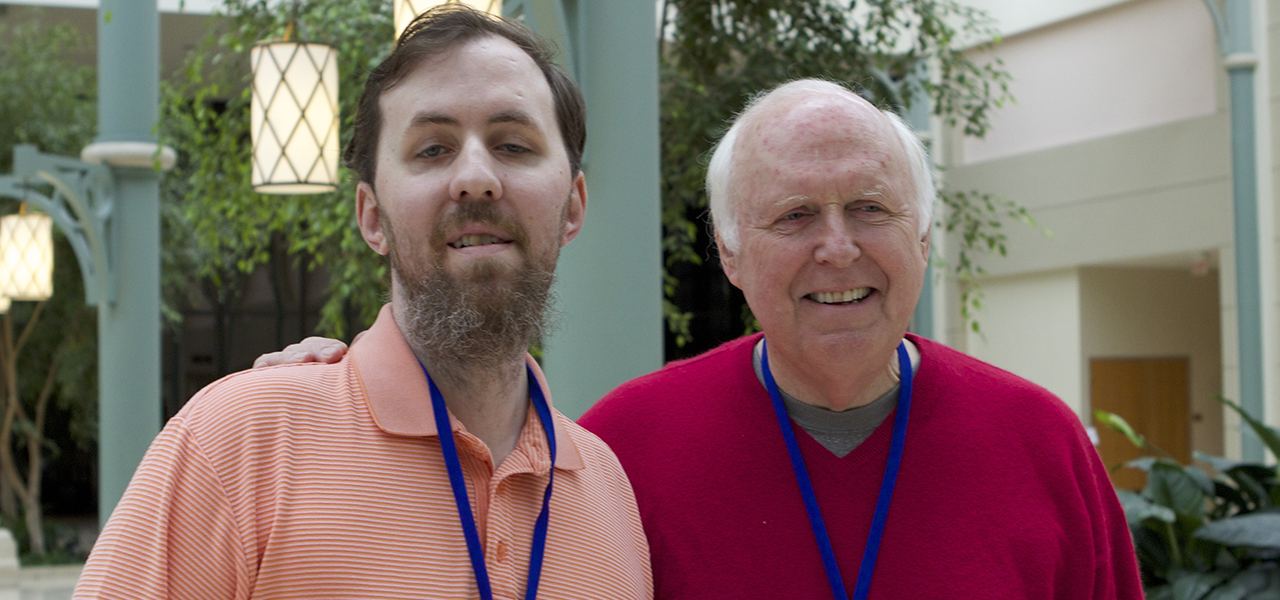Dr. Katharine Hagerman, Research Associate at Stanford University Neuromuscular Division and Clinics, has prepared the following summary of the recently published study, "Parental Age Effects, But No Evidence for an Intrauterine Effect in the Transmission of Myotonic Dystrophy Type 1" in the Journal of Human Genetics.
Researchers from the laboratories of Fernando Morales from the University of Costa Rica, and Darren Monckton from the University of Glasgow collaborated in a recent study examining how the DNA mutation causing myotonic dystrophy type 1 (DM1) worsens from one generation to the next. Previous studies have shown that the DM1 mutation behaves differently depending on whether it is passed on from the father or mother. However, there has been conflicting information regarding whether the age of the parent’s symptom onset or parent’s age at conception of their affected child can change the degree to which the child is affected by DM1.
The conflict in research findings is likely the result of using different methods to assess the size of the DM1 mutation, and failing to account for the age of the parent at the time the blood was collected, since the mutation grows throughout their lifetime. This study uses a newer technique called "small pool PCR" to assess the mutation size, and a complex statistical analysis to predict what the original size of the repeat was at birth. This method clarified the relationship between parent and child with regard to CTG repeat size and symptom onset, confirming that children born with DM1 have an inherited repeat that is larger than their parent’s repeat about 95% of the time, and symptom onset comes earlier in the child than their affected parent around 86% of the time. Furthermore, the parent’s age of onset is correlated with the child’s age of onset, but the correlation is much stronger in affected mothers than fathers.
What really stood out in this paper was a completely new finding that the age of the affected parent at conception correlates with the repeat size in their child. In other words, as people with DM1 age, the size of the repeat in their eggs or sperm grows larger. Basic genetic principles dictate that there is a 50% chance of an affected parent passing on the mutation to their child.
This paper found that if the child inherits the mutation from their mother and gets DM1, there is a 64% risk of the child’s DM1 being congenital if the mother’s repeat size is above 164 CTGs. There are very few cases of an affected father having a congenitally affected child, and none were found in this study. Unfortunately, current procedures for diagnosing DM1 do not use the same experimental method as in this paper and do not predict what the individual’s repeat was at birth. Therefore this predicted risk cannot be applied to mothers whose repeat was sized using conventional methods for diagnosis.
The authors estimate that the diagnostic test most women get to determine the size of their repeat would also predict that if their offspring inherit the expanded repeat, they would be congenitally affected 64% of the time when the mother's repeat length is over 284 CTGs.
Genetic counseling for families with DM1 can be very complicated, as many factors such as the repeat size and sex of the DM1-affected parent can alter any predictions as to how severely a child may be affected. Overall, this study clarifies how the growing repeat size in adults with DM1 can affect their children, and brings to light a new factor to be considered by genetic counselors when advising families of the risks of transmitting DM1.
Click here to view the article abstract. Click here for an interview on genetic counseling with Carly Siskind of Stanford University Hospital and Clinics.
08/20/2014

